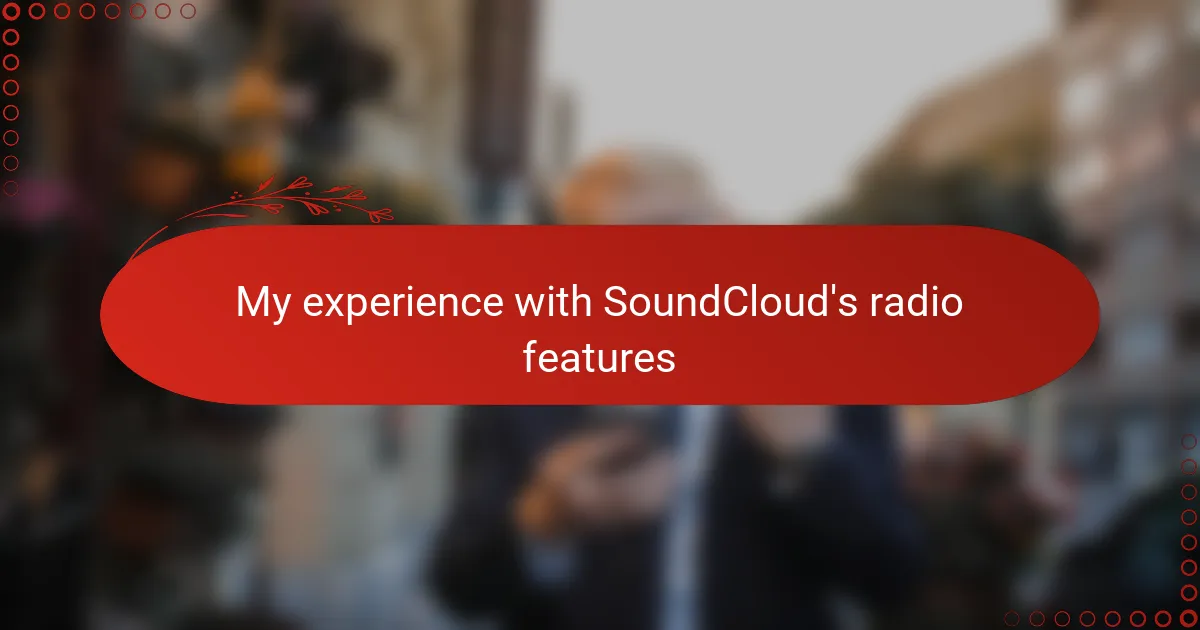Key takeaways
- SoundCloud radio combines traditional radio elements with digital flexibility, allowing personalized listening experiences through curated mixes.
- Setting up a SoundCloud station is user-friendly, enabling customization and automated mixes while handling technical aspects like streaming quality.
- Consistency in content, effective tagging, and listener interaction are crucial for building a loyal audience on SoundCloud.
- Future enhancements could include smarter personalization, live interactions, and community-driven content, making broadcasts more engaging and interactive.
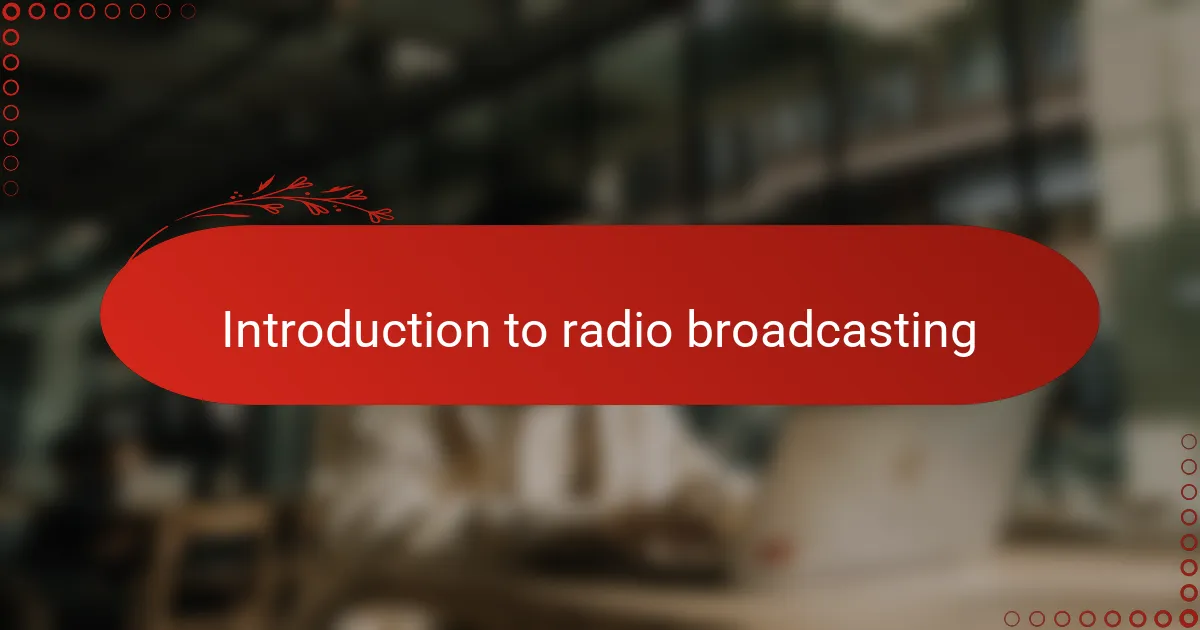
Introduction to radio broadcasting
Radio broadcasting has always fascinated me as a powerful way to connect people through sound. It’s amazing how voices and music travel invisibly across the airwaves, creating moments of shared experience. Have you ever stopped to think about how those waves manage to reach you, no matter where you are?
From my experience, radio is more than just a medium—it’s a kind of storytelling that feels intimate, almost like a conversation with a friend. There’s something uniquely personal about tuning into a station and hearing voices that understand your mood or interests.
I’ve often wondered what it takes to keep those broadcasts smooth and engaging behind the scenes. It’s a blend of technology, creativity, and timing that makes radio a constantly evolving art form—and one that continues to captivate me every time I listen.
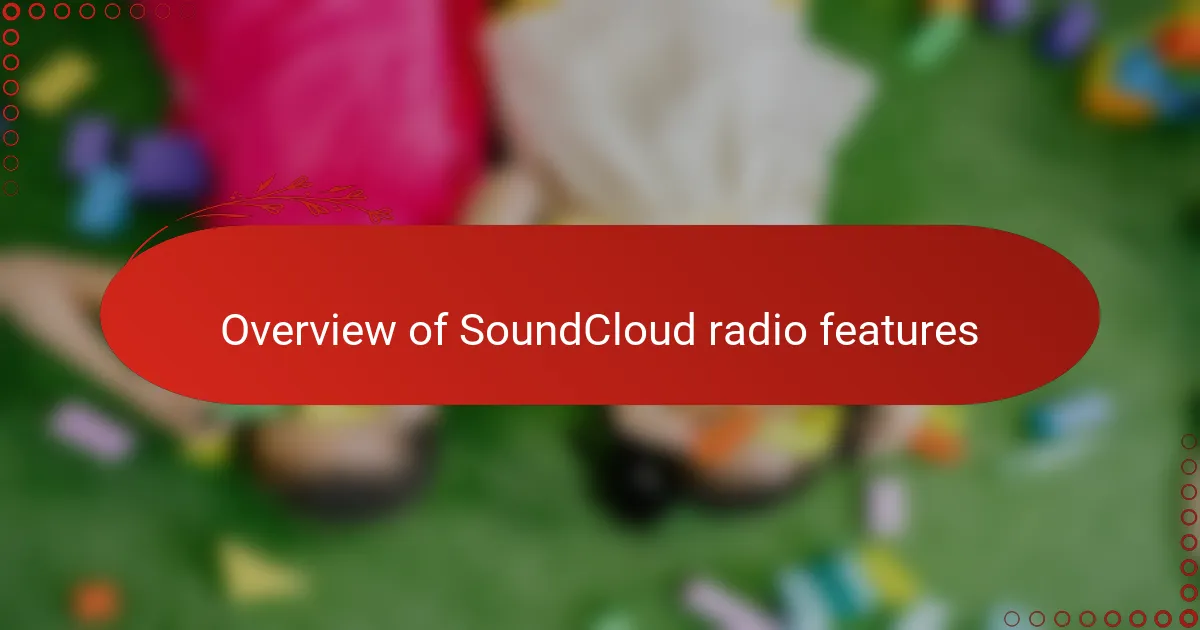
Overview of SoundCloud radio features
SoundCloud’s radio features intrigued me because they blend traditional radio vibes with the flexibility of digital streaming. Unlike conventional stations, SoundCloud lets listeners explore endless mixes that feel curated just for them, which sparked my curiosity about how these automated channels shape the listening experience.
I remember the first time I stumbled upon a SoundCloud radio mix—it was like discovering a secret playlist that evolved with every track, almost reading my mood. Have you ever felt that sense of surprise and comfort when music seems to just get you? That’s what these features strive to deliver by analyzing your past plays and spinning them into fresh, seamless broadcasts.
What I appreciate most is how SoundCloud’s radio tools empower creators and listeners alike to connect over shared tastes without the barrier of scheduled programming. It makes me think: could this be the future of radio, where personalization meets the spontaneity that keeps us hooked?

Setting up a SoundCloud radio station
Setting up a SoundCloud radio station felt surprisingly straightforward when I first tried it. I simply uploaded my tracks or created playlists, then used SoundCloud’s radio feature to automatically generate continuous mixes. It was thrilling to see my music shape itself into a flowing broadcast without needing to manually queue every song.
What really stood out to me was how customizable the setup could be. I asked myself, “How much control do I want over the sequence and vibe?” With SoundCloud, I could tweak settings to lean into certain genres or moods, making the station truly mine. It’s like being a DJ who never pauses, letting creativity run uninterrupted.
I also appreciated that SoundCloud handles the technical side—streaming quality, transitions, and even adding fresh tracks based on listener feedback. It made launching my station feel less like a chore and more like sharing a personal soundtrack with friends who might be tuning in somewhere far away. Have you ever wished your music could reach beyond your headphones effortlessly? This feature makes that dream feel possible.
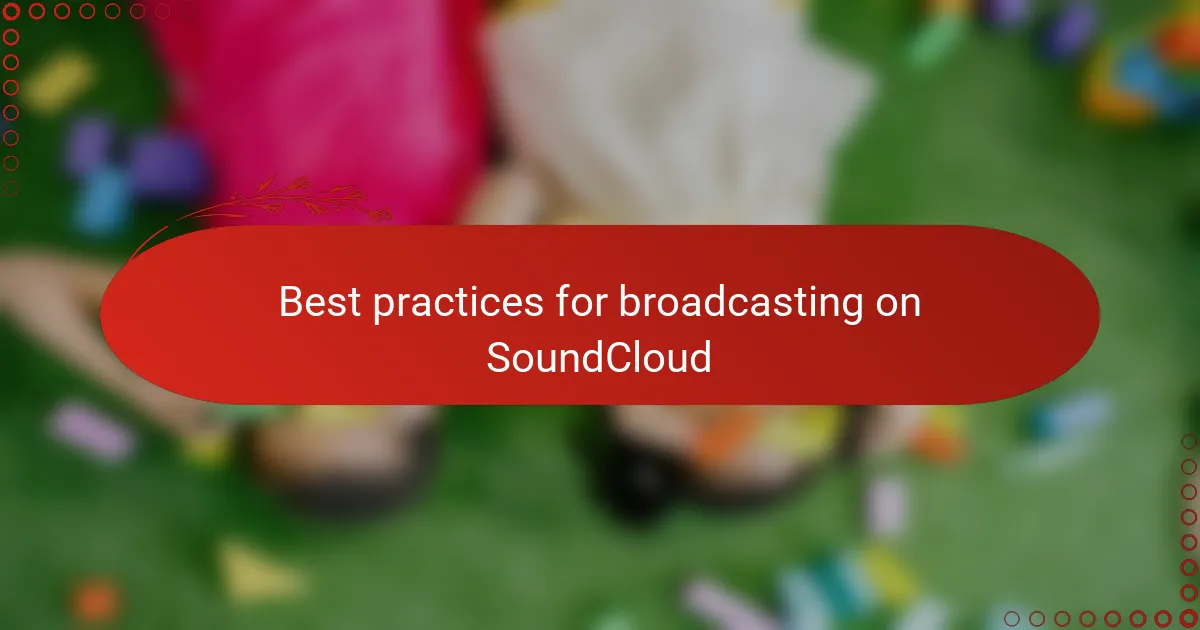
Best practices for broadcasting on SoundCloud
When I started broadcasting on SoundCloud, I quickly realized that consistency is key. Uploading regularly and keeping a steady flow of fresh content not only keeps listeners engaged but also helps the algorithm recognize and promote your station. Have you noticed how stations that update frequently tend to build loyal audiences quicker? That rhythm of regularity really sets the foundation.
I’ve also found that understanding and using SoundCloud’s tagging system effectively makes a huge difference. By carefully selecting genres, moods, and descriptive tags, I helped my broadcasts reach people who are more likely to enjoy them. It’s like sending a personal invitation to the right crowd—who doesn’t want their music heard by listeners who truly appreciate it?
Lastly, I believe interaction is often overlooked but incredibly important. Responding to comments and paying attention to listener feedback allowed me to fine-tune my mixes and create a more engaging experience. After all, broadcasting isn’t just about sharing your sound—it’s about building a community that feels heard and valued. Doesn’t that give the whole process a richer meaning?
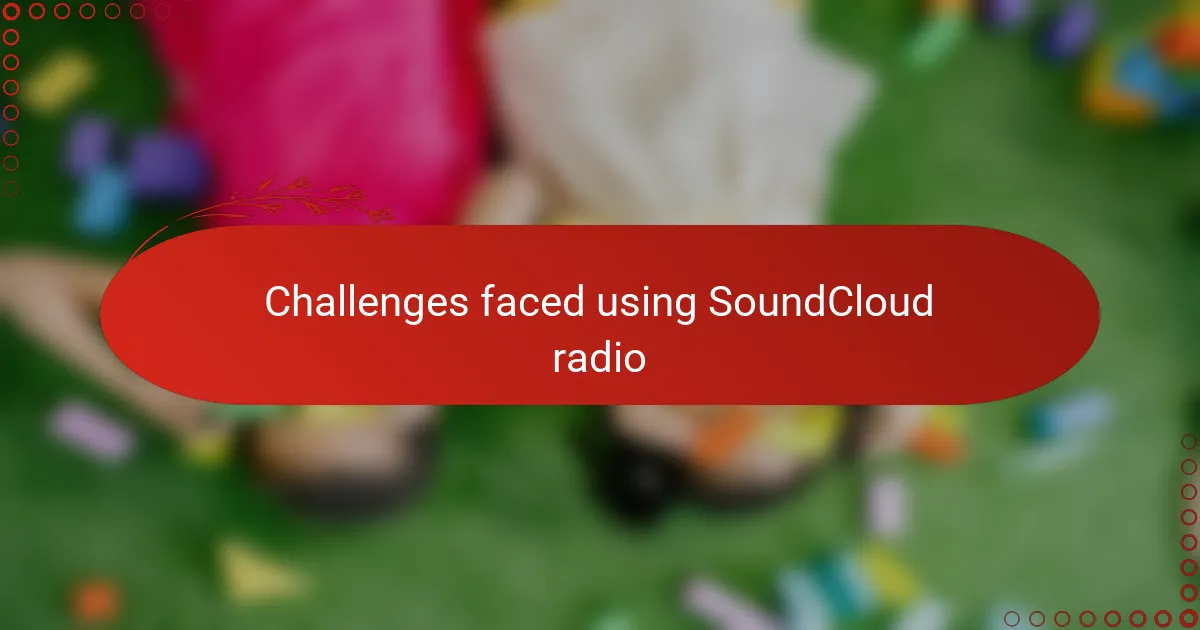
Challenges faced using SoundCloud radio
Using SoundCloud’s radio features wasn’t without its hiccups. At times, I noticed the automatic mixes would loop similar tracks too often, which made the station feel a bit repetitive. Have you ever experienced that moment when you’re eager for variety, but the playlist stubbornly cycles through the same beats? It made me realize that while automation saves time, it can’t always capture the nuanced flow I want.
Another challenge was managing track permissions and copyright issues. Some songs I uploaded or included in mixes unexpectedly got flagged or removed, disrupting the broadcast rhythm. It was frustrating—like setting up a conversation only to have key voices suddenly muted. How do you balance creative freedom with the platform’s strict rules? For me, it became a learning curve in navigating digital rights alongside artistic expression.
Lastly, I sometimes struggled with the limited control over the fine details of transitions and timing. I wanted smoother shifts between tracks or to highlight certain songs longer, but the interface didn’t always allow that level of precision. There’s a certain joy in being a live DJ, reading the room and adjusting on the fly—something I found tricky to replicate on SoundCloud’s automated system. Does relying on algorithms take away a bit of that human touch? In my experience, it’s a delicate trade-off between ease and artistry.
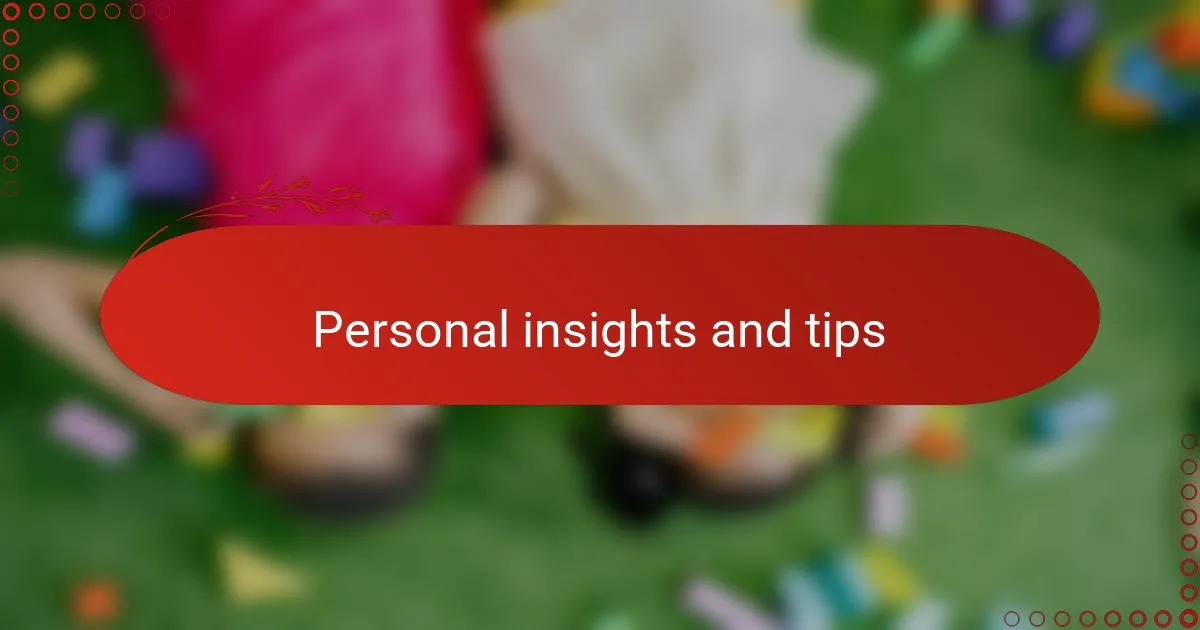
Personal insights and tips
One thing I’ve learned is to embrace the balance between control and automation. At first, I tried to micromanage every detail, but SoundCloud’s radio features work best when you allow them some freedom to adapt. Have you ever found that letting go a little actually sparks more creativity?
I also recommend paying close attention to listener feedback—it’s a goldmine for improvement. When someone points out a track that doesn’t quite fit or suggests a vibe tweak, it feels like having a friendly co-host helping shape the broadcast. That collaborative energy made my station feel more alive and authentic.
Finally, don’t underestimate the power of consistent branding. I made sure my radio station had a clear theme and personality, so listeners knew what to expect every time they tuned in. It’s like greeting a familiar friend; that sense of reliability keeps people coming back, week after week.

Future possibilities with SoundCloud radio
Looking ahead, I’m genuinely excited about how SoundCloud radio could evolve with even smarter personalization. Imagine a system that not only learns your favorite tunes but also understands your daily rhythm, shifting from upbeat tracks in the morning to mellow sounds at night. Doesn’t that kind of intuitive broadcasting feel like the next step in making radio truly feel like a companion?
Another possibility that intrigues me is integrating live elements into these automated streams. What if creators could effortlessly jump in for live shout-outs or quick chats without disrupting the flow? That blend of real-time interaction and seamless playlists could bring back some of that human spontaneity I’ve missed while still enjoying the convenience of automation.
Lastly, I think expanding collaboration tools could change the game for community building around SoundCloud stations. Could listeners contribute their own little segments or vote on upcoming tracks? From my experience, sharing a broadcast feels much richer when it becomes a two-way conversation rather than a one-way playlist—making radio less about passive listening and more about shared moments.
